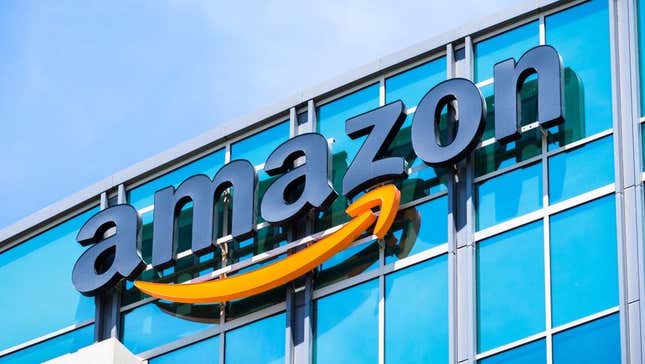
Pull up Amazon to search for a product, and there’s one thing you’re guaranteed to see no matter what you want to buy: ads. That isn’t a fluke. The Amazon website and the app are so full of ads that it actually makes it harder to shop, according to recent reports from both Vox and the Washington Post. But if the company’s recent profits are any indication, don’t expect things to change any time soon. These days, Amazon makes more money from advertising than from Prime.
It’s a recent and surprising shift for the e-commerce giant. Amazon made almost $36 billion from ads over the last year, compared to just over $34 billion from subscriptions, according to the company’s most recent earnings report, released in October. And that’s all of its subscription services combined, including the famed Prime as well as video, music, and eBooks and Audible audiobooks (some services come bundled with a Prime subscription). Amazon advertising profits spiked a whopping 58% in 2021, and they continue to grow at a blistering pace.
You can feel the growth of the ads business in the experience of shopping on Amazon. The Post’s recent Amazon story features an interactive graphic highlighting just how many ads you have to sift through. The first batch of visible search results is often nothing but sponsored products, and the field is typically crowded with more ads as you scroll down. You can look for the tiny gray “sponsored” disclaimer for an indication, but other content is competing with the most relevant products, too, including Amazon’s promotion of its own products.
Even when you type in the name of a specific brand, other company’s products often show up first. It’s hard to argue that it doesn’t make for a worse customer experience when the search results you searched for are buried below paid promotion.
Amazon says it’s dedicated to helping customers find what they need. “We are proud to share that 89% of U.S. customers say they are satisfied with their overall experience on our shopping results pages,” said Smita Saran, an Amazon spokesperson. “We are dedicated to providing customers with a world class shopping experience, including working hard every day to ensure the ads they see are useful, informative, and help make shopping a little bit easier.”
Ads might not be top of mind when you think about Amazon’s business model, but increasingly, they should be. Amazon is now the third biggest seller of digital advertising in the US, outpaced only by Google and Meta, the company formerly known as Facebook.
It’s not just Amazon that’s polluting its feed with ads. Google search results are equally as crowded with advertising. When I checked over the weekend, I saw an ad on Twitter about every five tweets. On YouTube, the number of ads that play before a video and the number of ad breaks interrupting videos have skyrocketed. Apple has started slipping more ads into its App Store, and the company is reportedly planning to bring ads to Apple TV. Advertisers can now reach you on Netflix and Disney+, too.
These anecdotes are part of a much bigger trend. The number of ads companies are showing you, referred to as “ad load” in the advertising industry, is on the rise. In part, that’s because individual ads have recently become less profitable. Privacy changes from governments and companies like Apple have made more valuable targeted advertising harder to do. And with the economy in a downturn, a lot of big advertisers have cut back their spending. For companies that make their money selling ads, an easy solution to shrinking profits is to just increase the number of ads people are exposed to.
We’re seeing more ads in more places, too. These days, practically every company has its own ad network. Kroger, Marriott, Uber, and other large companies have launched their own advertising systems in the last year.
Blasting your customers with more ads is a tradeoff. If you’re not careful, it makes the experience of using your services worse, no matter how “relevant” the ads may be. The only question is how far companies like Amazon are willing to compromise their user experiences.
Update: 11/28/2022 1:50 p.m. ET: This story has been updated with a comment from Amazon.

